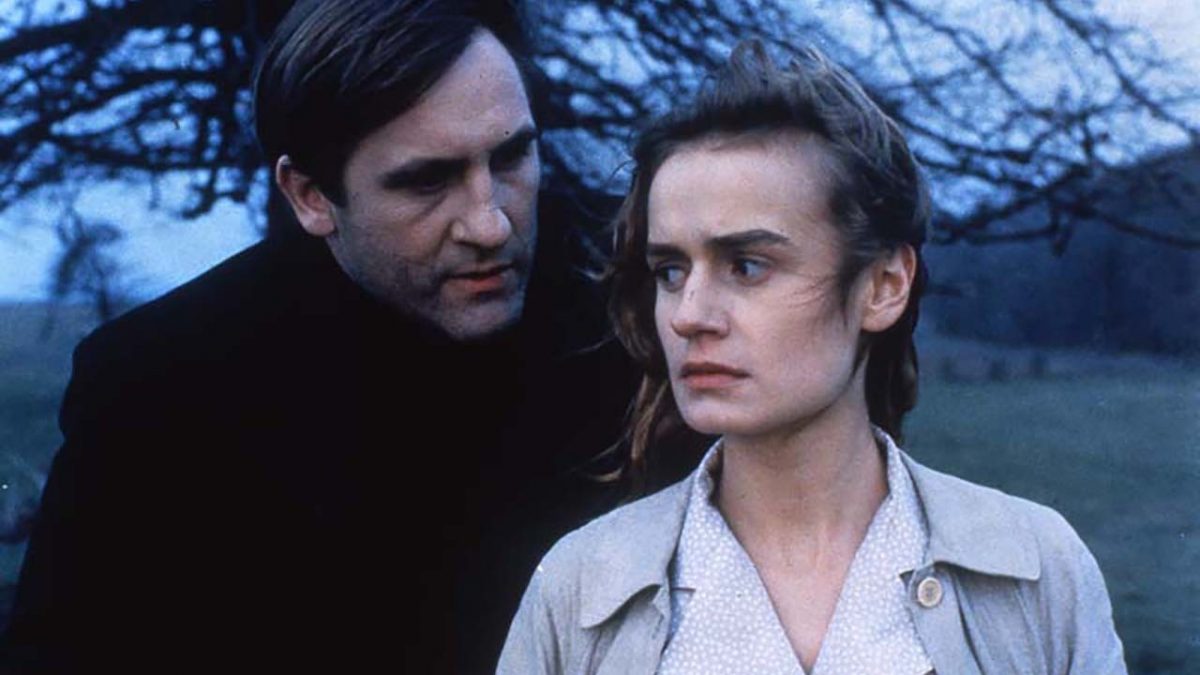Under The Sun Of Satan

Sous le soleil de Satan
Maurice Pialat
France – 1987

Screenplay: Sylvie Pialat, Maurice Pialat
Cinematography: Willy Kurant
Production: Erato Films Films, A2, Flach Film, Action Films, Centre National de la Cinématographie, Sofica Investimage, Sofica Créations
Language: French
Duration: 93 min
Color: Color
Synopsis: Donissan and Mouchette are bonded from the start, as he gazes across space and time at her killing her paramour. Donissan is a priest whose intense physical self-punishment is rendered all the more terrifying by his manifest physical strength. The fury of his religious devotion alienates his parishioners even as he seems to sense the presence of the Devil more clearly than that of God. Plagued with doubts, he seeks council with his mentor, dean Menou-Segrais. Having grown up poor, Donissan knows too much of the world’s filth, which complicates the purity of his theology. The bourgeois dean has the luxury of being worldly, sufficiently removed from harsh realities of life that he can embrace the contradictions of God’s teachings and creations. An unlikely gift from an encounter with an agent of Satan, Donissan has been given vision and insight, and the ability to heal and perform miracles. The priest blurs the line between good and evil, performing works in God’s name with power derived from the Devil. When he intervenes in the life of the sixteen-year-old girl who sleeps with older men, casually giving herself away even as she knows that she’s being used, Mouchette is ultimately undone by his misguided attempts to help her.
Notes:
Maurice Pialat and his work process (never say action, never say cut) made him more than yet another naturalist filming the death of a parent or the fickle ways of teenage lotharios. As is stunningly apparent in his films, Pialat’s secret was his sense of structure, a way of juxtaposing apparently random moments before crystallizing a film’s emotion and significance in one long scene, such as the epic Sunday lunch in Loulou (1980). Perhaps this is what makes his films so lifelike: you don’t really understand what they add up to until they have elapsed.
The mystery deepens in Under the Sun of Satan, this most agnostic filmmaker’s excursion into transcendence. The film is based on the first novel by Georges Bernanos, author of “Diary of a Country Priest” famously brought to the screen in the 1950s by Robert Bresson. Pialat tunes into Bernanos’ tired renegade Christian, envisioning spiritual life as nonstop three-way psychological warfare between lowly man, scornful Satan, and unfeeling God. All is grace, perhaps, but grace is not all. For Gerard Depardieu’s Father Donissan, every victory is a possible defeat at the hands of the evil one, and his final miraculous resurrection of a dead child feels like the last insult, a fatal expenditure of soul energy, not unlike Christopher Walken’s draining premonitions in The Dead Zone (1983). Pialat is an unorthodox adapter. He keeps everything present tense and organic, dropping anything but the necessary to create the impression of a “period” film. Nothing more than a few sparsely appointed rooms, a handful of extras, a wagon, a plow. The onscreen world never comes fully alive, and the viewer’s attention is drawn not towards the visual and emotional textures but the shadowed faces of spiritual opponents, often stunned into immobility, locked in endless rounds of savage psychic volleying. Born in 1925, after Rohmer and before Godard, Pialat was an exact contemporary of the filmmakers of the New Wave. But he did not make his first film, L’enfance nue (Naked Childhood), until 1968, almost ten years after the New Wave emerged, as he was on the “waiting list” of directors not deemed quite ready to represent that particular aesthetic. This, perhaps, gave his early films a human density that the New Wave sometimes lacked. Closer to Jacques Rozier and Jean Eustache than to Chabrol or Rivette – whom he hated with a passion – Pialat is an autobiographical filmmaker who manages to put all of himself into his work even when he undertakes an apparent genre film like Police (1985), an adaptation of a literary work (Under the Sun of Satan), or a period biopic such as Van Gogh (1991). Never satisfied, neither with himself nor with others, he dreamed of being a radical cineaste in touch with the popular audience – which he sometimes was, as his occasional commercial successes testify. Pialat fought against the bad habits of industrial cinema, its routines, formulas, and narrative codes – against the lazy self-satisfaction of a mass art. Prone to fits of anger, along with the innumerable psychodramas that accompanied his shoots, he earned a widespread reputation as a troublemaker. But the results are there: next to any of Pialat’s eleven features, most other French films of that period look hollow and insincere.
Notes adapted from Jones, K. (2004). Under the Sun of Satan (Sous le soleil de Satan) (1987). Film Comment, 40(3), 48. and Bonnaud, F. (2003). Obit: Maurice Pialat. Film Comment, 39(2), 11.


